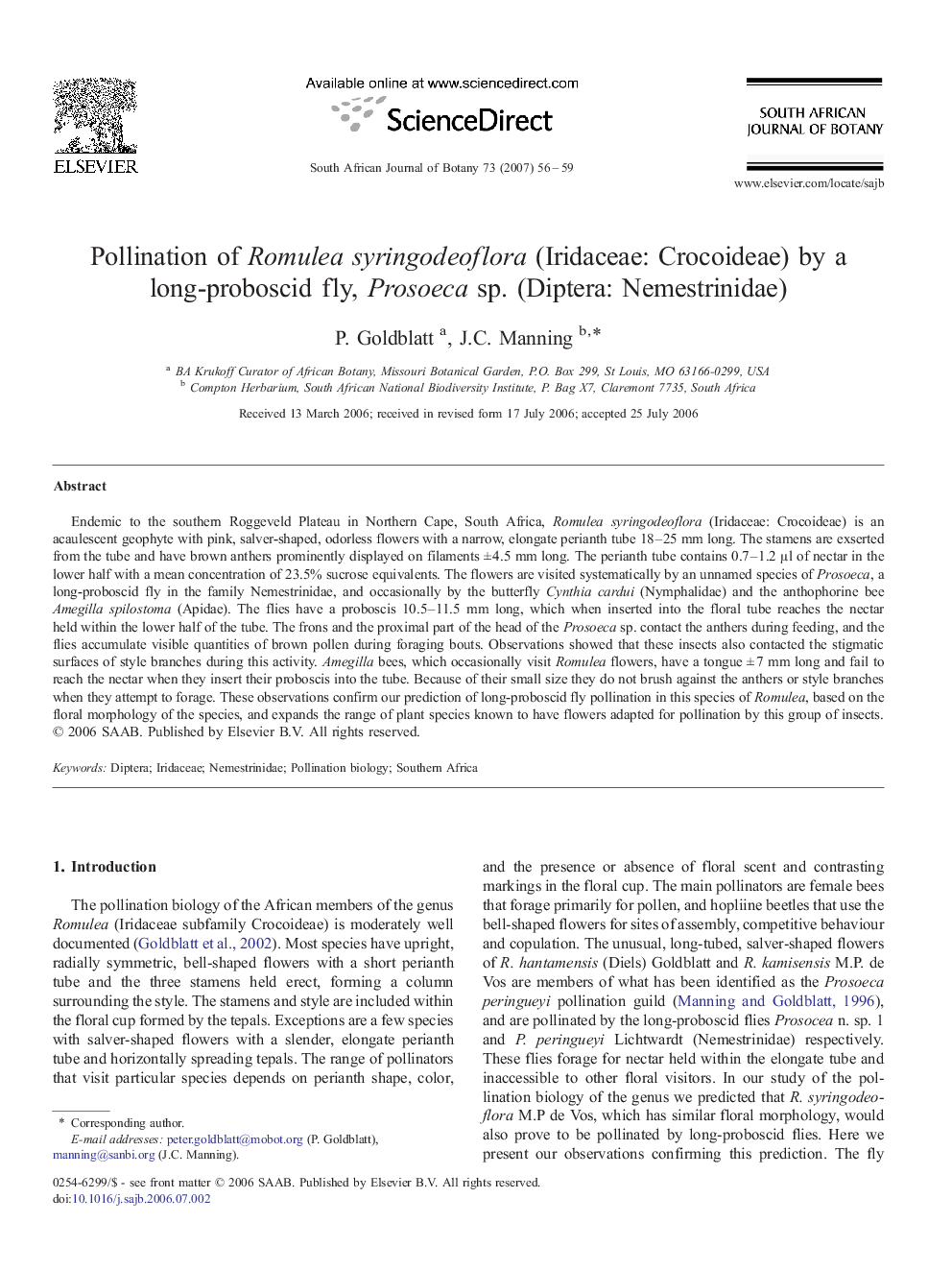| Article ID | Journal | Published Year | Pages | File Type |
|---|---|---|---|---|
| 4521762 | South African Journal of Botany | 2007 | 4 Pages |
Abstract
Endemic to the southern Roggeveld Plateau in Northern Cape, South Africa, Romulea syringodeoflora (Iridaceae: Crocoideae) is an acaulescent geophyte with pink, salver-shaped, odorless flowers with a narrow, elongate perianth tube 18-25 mm long. The stamens are exserted from the tube and have brown anthers prominently displayed on filaments ± 4.5 mm long. The perianth tube contains 0.7-1.2 μl of nectar in the lower half with a mean concentration of 23.5% sucrose equivalents. The flowers are visited systematically by an unnamed species of Prosoeca, a long-proboscid fly in the family Nemestrinidae, and occasionally by the butterfly Cynthia cardui (Nymphalidae) and the anthophorine bee Amegilla spilostoma (Apidae). The flies have a proboscis 10.5-11.5 mm long, which when inserted into the floral tube reaches the nectar held within the lower half of the tube. The frons and the proximal part of the head of the Prosoeca sp. contact the anthers during feeding, and the flies accumulate visible quantities of brown pollen during foraging bouts. Observations showed that these insects also contacted the stigmatic surfaces of style branches during this activity. Amegilla bees, which occasionally visit Romulea flowers, have a tongue ± 7 mm long and fail to reach the nectar when they insert their proboscis into the tube. Because of their small size they do not brush against the anthers or style branches when they attempt to forage. These observations confirm our prediction of long-proboscid fly pollination in this species of Romulea, based on the floral morphology of the species, and expands the range of plant species known to have flowers adapted for pollination by this group of insects.
Related Topics
Life Sciences
Agricultural and Biological Sciences
Agronomy and Crop Science
Authors
P. Goldblatt, J.C. Manning,
